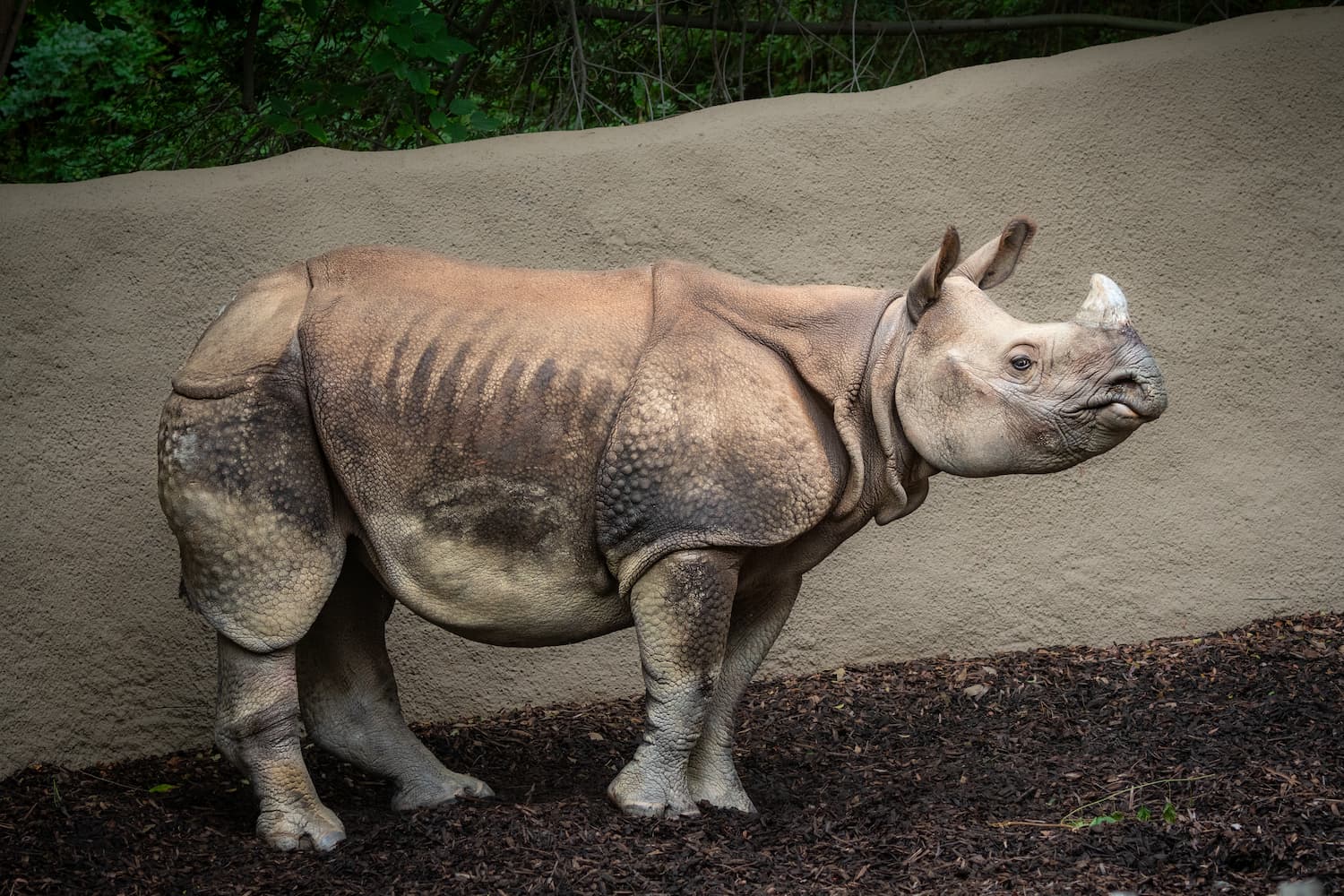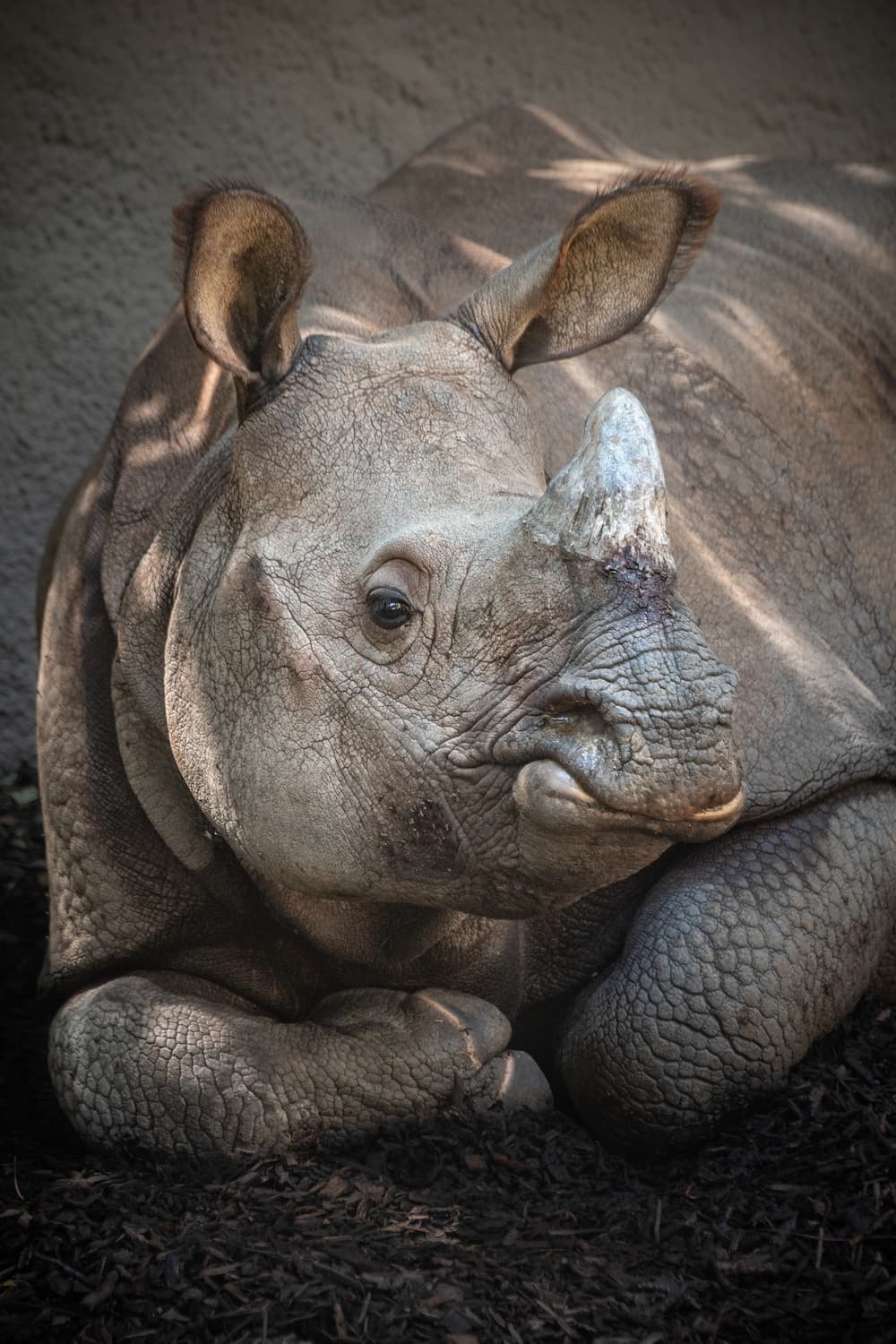Greater One-Horned Rhinoceros
The scientific name for the greater one-horned rhinoceros, unicornis, means “one horn” in Latin. Because of its singular horn, this rhino has been associated with the unicorns of legend.
The rhino’s horn reaches a length of between 12 and 15 inches and is made of keratin, the same substance as human fingernails. Just as humans clip their fingernails, rhinos rub their horns to shorten their length.
Although it has been widely believed that rhinos are dangerous and formidable fighters, they usually flee from danger. Male greater one-horned rhinos do fight each other during mating season, although they tend to tolerate other males in their territories in other seasons.
There are about 2,000 greater one-horned rhinos in existence. They currently live in parts of northeastern India and Nepal (in fact, the greater one-horned rhino was previously known as the Indian rhino). Illegal poaching for their horns and habitat destruction are the major threats to their survival. It is these threats that almost brought the species to extinction in the 1900s. Staunch protection by wildlife authorities in India and Nepal has been a great asset to their preservation.
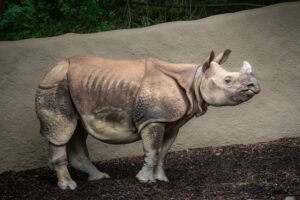
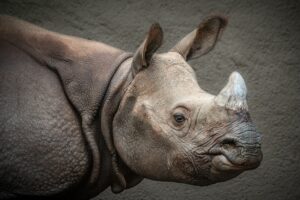
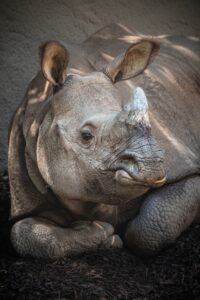
HABITAT
The greater one-horned rhino inhabits swamp-like or grassland environments. Most are found in protected areas.
DIET
Greater one-horned rhinos browse and graze mostly on various types of grasses, leaves, and aquatic plants and fruits.
PHYSICAL CHARACTERISTICS
The greater one-horned rhino is mostly covered in a thick, silver-brown skin characterized by numerous folds. The upper legs and shoulders are covered in bumps that almost appear to be warts. It has very little body hair. Males on average are six feet high at the shoulder and about 14 feet long. They weigh about 3,500 pounds.

